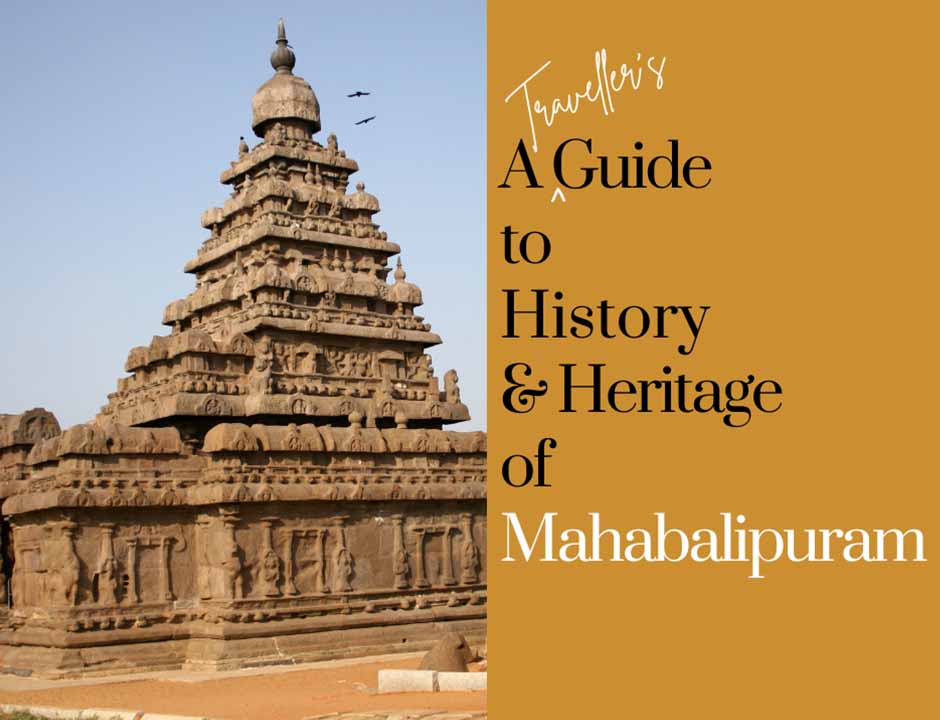A Cultural & Heritage Travel Guide on Mahabalipuram

Frequently Asked Questions Regarding Exploring Mahabalipuram
What is the early history of Mahabalipuram?
The early history of Mahabalipuram begins with the Pallava Kings setting up a seaport here in the 7th century. It became a prominent port in the western side of India and had been doing brisk business with the Chinese and the middle east since then.
The place was called Mamallapuram during that time. Mahabalipuram was a part of Kanchipuram, the capital city of Pallava rule, whose history begins in 2 century BCE. The Pallavas were known for their architectural brilliance and artistic achievements, and Mahabalipuram is a testament to their legacy.
What is the colonial heritage of Mahabalipuram?
Mahabalipuram was a part of the Madrass Regency and was under British colonial rule until India’s independence in 1947.
Though the importance of the Mahabalipuram port dwindled over a period of time, especially after the expansion of ports in Chennai etc., some other British built several structures that are still standing.
It includes the Mahabalipuram Lighthouse, and the East Coast Road, which connects Mahabalipuram with Chennai.
What is the cultural heritage of Mahabalipuram?
Mahabalipuram has been a centre of cultural importance throughout history. The best example is the temples themselves. You will be surprised and intrigued by how the engineers of that time built such masterpieces without using computers or CAD.
The carvings on rock structures are alluring and enticing. The Shore Shore Temple, the most famous temple in Mahabalipuram, is now a UNESCO World Heritage site. A well-deserved recognition. This is an 8th-century temple boasted as the epitome of Dravidian architecture.
We highly recommend you attend the annual dance festival held in December-January time here in Mahabalipuram.
How to reach Mahabalipuram?
Mahabalipuram is well-connected by road and rail. Chennai International Airport (MAA) is about 60 kilometres/32 miles away. Hiring a taxi is the best and quick way to reach your destination. If you are travelling by train, get down to Chengalpattu, which is 29 kilometers/18 miles away. Chengalpattu to Mahabalipuram can be done by bus or taxi.
What are the top seven historical and heritage places to see in Mahabalipuram?
a. Shore Temple. The 8th-century temple, renowned for its enticing and stunning architectural style, carvings and rock works, is the most iconic among the temples in Mahabalipuram. It is a UNESCO World Heritage site.
b. Pancha Rathas – The Pancha Rathas or Five Chariots are monolithic rock-cut temples carved from a single piece of granite. The Rathas are named after the five Pandava brothers from the epic Mahabharata.
c. Arjuna’s Penance – A giant low-relief, Arjuna’s Penance depicts scenes from the Hindu epic, the Mahabharata. The bas-relief is 27 meters long and 9 meters high.
d. Varaha Cave Temple – The Varaha Cave Temple is a rock-cut temple dedicated to Lord Vishnu. The temple is famous for its intricate carvings and sculpted pillars.
e. Krishna’s Butterball – Krishna’s Butterball is a giant balanced boulder
on a sloping rock surface near the Ganesha Ratha. The 6 meters high and 5 meters wide boulder somewhat defies the laws of gravity.
f. Mahishasuramardini Cave – The Mahishasuramardini Cave is a rock-cut temple dedicated to Goddess Durga. The temple is known for its beautiful carvings of the goddess and her cohort.
g. Tiger Cave – The Tiger Cave is a rock-cut temple about 5 km from Mahabalipuram. The temple is famous for its tiger-shaped mandapa and beautiful rock-cut sculptures.
What are the other places of tourist interest in Mahabalipuram?
Besides its historical and heritage sites, Mahabalipuram has several other places of tourist interest. Mahabalipuram Beach is a popular spot and mostly crowdy. The town is also famous for its stone carving workshops, where visitors can watch artisans at work and purchase a souvenir.
Which season is ideal for visiting Mahabalipuram?
The best months to visit Mahabalipuram are November through February because of the mild and comfortable weather. The summer months i.e March to June, can be pretty hot and muggy in the town. Outdoor expeditions can become challenging during the rainy season also, which lasts from July to October. Avoid visiting Mahabalipuram during these two periods.
What types of art performances should you try to see in Mahabalipuram?
Classical performances and cultural shows are happening in town at regular intervals. However, the most important and recommended is the yearly dance festival, which draws performers from all over India and takes place in December or January.
What are the best souvenirs to buy from Mahabalipuram?
Mahabalipuram is famous for its stone carvings, which make great souvenirs. If you are interested in taking home some souvenirs, carrying a replica of one of the temples you have been to here can be a good idea. You will find shops selling small sculptures, figurines, and jewellery made of various stones across the town. The bargain is expected and accepted. Other popular souvenirs include handcrafted textiles, paintings, and handicrafts.
What traditional food and drinks must you try while in Mahabalipuram?
Mahabalipuram is known for its delicious South Indian cuisine, which includes dosas, idlis, vadas, and sambar. Visitors can also try local delicacies like appam, a pancake made from fermented rice batter, and Pongal, a rice and lentil dish cooked with ghee and spices. Traditional drinks include filter coffee and chai tea.
How many days may you need to explore Mahabalipuram?
One full day. It is a small town. Overnight stay is also worthwhile. But ensure you stay in a comfortable hotel and have a guide who can explain the wonders you will see here at its core.
Is visiting Mahabalipuram worth it?
Yes, visiting Mahabalipuram is worth it for temple, history and culture enthusiasts. Temples here are the finest examples of Dravidian architecture. Luckily it is near Chennai.
What are the best Heritage, Heritage and Local Experience Hotels available in Mahabalipuram?
We have selected the following accommodations for you to consider;